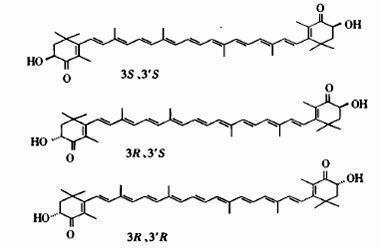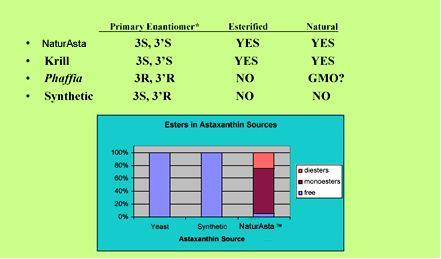Nature astaxanthin――the health care product &cosmetics for the ornamental fish
What is the Ornamental fish’s core-value?
The industry has primary responsibility to answer this question. The ornamental fish’s core-value is well known as continuity of sight-enjoying. The health and bright color of fish make sure the continued visibility become possible, which depends on the quality of fish feed. Thus Ornamental fish feed is different from the fish feed be used for economic fish. Health & enhance reddish color functions has more significant than fast-grown function. Furthermore, the component with such function costs most in the ornamental fish feed. So it requires ornamental fish feed companies change traditional concepts and adjust formula scientific to meet the development needs on ornamental fish industry.
What material can make fish become healthier and also have enhance-color effect? ―― natural astaxanthin
Chinese fish feed production plants done lots of research, which have made certain achievements; however, it can not have the desired effect. The ornamental fish in the natural
environment eat nature food to keep healthy and vivid color. It is very clear that the main foods for them are shrimp and plankton. Enough nutrients could be obtained from the shrimp, such as: nature astaxanthin、protein、vitamin etc. The table below shows food astaxanthin concentration content on the natural state.
TABLE 1 - NATURAL SOURCES OF ASTAXANTH
TABLE 1
Astaxanthin natural source Astaxanthin concentration(ppm)
Salmons 5
Plankton 60
Krill 120
Arctic shrimp 1200
As the main food for the ornamental fish, shrimp astaxanthin concentration is 80-120PPM. In other words, it is enough for ornamental fish by using fish feed with 120ppm astaxanthin concentration. However, fish feed per ton had 3-4kg BASF astaxanthin (10% pure astaxanthin content) in the past practice (300-400 PPM /g / t) still could not get satisfactory on enhance-color effect, time even causes a rapid fading of color. Why?
The scientific community has already carried out exploration in order to answer the question above. Actually, as other substances, isomerism of due to astaxanthin in nature does exist. That is to say, astaxanthin with the same molecular formula C40H52O4, due to its different space structure、geometry structure、esterification conditions,the physiological functions、tissue distribution in fish、the extent of protein binding and metabolic rate are also different, which could be stated as follow:
1. Astaxanthin occurs in Stereoisomers and geometric isomers forms (the pictures shows below)

Astaxanthin molecule with different space structure( different hydroxide radical, -OH) exists in three stereoisomers: 3S,3'S, 3R, 3'S, or 3R,3'R.
Molecular structure for astaxanthin produced in nature by algae is the same as astaxanthin in shrimp, which contents astaxanthin 100% with 3S, 3'S structure. However, whether BASF or DSM’s synthetic astaxanthin is the astaxanthin mixture has a ratio of approximately 1:2:1 between the (3S,3’S),(3R,3’S),(3R,3’R)isomers. The main molecular structure for astaxanthin from the yeast Phaffia rhodozyma is 3R, 3’R. Hence, only 25% content for synthetic astaxanthin has 3S, 3’S molecular structure (astaxanthin in shrimp).
During sexual maturity, the main molecular structure for astaxanthin in aquatic animal skin, scale and ovary is 3S、3’S, only a few astaxanthin with 3R、3’R structure, nearly none 3R、 3’S molecule. There is no biological activity on astaxanthin with 3R、 3’S molecule( no antioxidant activity). 3R、3’R molecule has part of biological activity and only 3S、 3’S astaxanthin has strong antioxidant activity
Compared to nature astaxanthin from algae(100% 3S、3’S molecular structure ), only 25 percent of the total synthetic astaxanthin in which BASF and DSM’s fish feed has 3S、3’S molecular structure. If synthetic astaxanthin content in the composition of fish feed is 10%, 2.5% astaxanthin could be deposited in the fish skin and scale. This explains the synthesis astaxanthin in the ornamental fish feed even reached 300-400 PPM; enhance-color effect still can not be satisfactory. Actually, one-fourth of the total synthesis astaxanthin deposits in the fish skin and scale.
Two carbon atoms within the molecule which is connected by a double carbon-carbon bond(C=C) could not rotate. So atoms form the cis-trans isomerism be commonly referred to as “the E, Z Designation” (Trans isomers is assigned as the configuration E; Cis isomers is assigned as the configuration Z) .as the propaganda of cis/trans fatty acids, more people are getting to know its function. Geometric isomers form affects the absorption of astaxanthin. Due to astaxanthin with configuration Z could not be absorbed by animals, The U.S. Food and Drug Administration (FDA) has banned cis-isomeric astaxanthin come into market. With the improvement of synthesis technology, most content of synthesis astaxanthin has the configuration E; however, the same configuration in nature astxanthin is 98%
MRI scans can clearly detect the above mentioned isomer forms. Different isomer forms can not be transformed into each other in animals; furthermore, synthesis technology has solved the problem of geometric isomers rather than Stereoisomers isomers, so natural products can not be completely replaced, Synthetic products only be used as a part of fish feed content. Whether from the biological functions or from fish distribution among the different tissues, astaxanthin with 3S、3’S molecular

Two hydroxyl (-OH) groups in astaxanthin molecule could be esterified, which lead to the differences of free astaxanthin (unreacted hydroxyls), monoesters and diesters. Ester group is a link between astaxanthin and the protein of fish scale. So it is not be able to combine astaxanthin with the protein if the link is inexistent. Astaxanthin from algae includes 20% di-esters, 75% mono- esters and 5% molecule with “free" (unreacted) hydroxyls. But 100% molecule of the synthesis astaxanthin has “free" (unreacted) hydroxyls. The picture below shows the analysis for astaxanthin from different sources by thin layer chromatography.
It is easy to find that the astaxanthin in krill oil is almost the same as natureAsta (from the algae), phaffia and synthetic are completely different.
Free hydroxyl astaxanthin or esterification of astaxanthin major impact on its stability, the extent of protein binding and metabolic rate in animals. Astaxanthin with free hydroxyl is not able to combine with the protein, so it only shows the red instead of other colors, such as white, blue, black etc; moreover, it can easily metabolize. This explains why the synthesis astaxanthin (only 25% astaxanthin with 3S、3’S molecular structure) could distribute in fish skin and scale, but if supplement is not in time, rapid metabolism of astaxanthin causes the fish skin bleaching. A typical example is the color for healthy prawn is cyan and it turns red when be cooked (esterified astaxanthin is separated from protein), such astaxanthin in prawn shall be esterified. Due to 100% molecule of the synthesis astaxanthin has “free" (unreacted) hydroxyls, it shows red but can not enhance other colors. Nature astaxanthin from algae and shrimp includes 5% free astaxanthin and 95% esterified astaxanthin (20% diesters & 75% monoesters).
Lorenz RT confirmed through the experiment: concerning to the coloring problem in the ornamental fish breeding, only nature astaxanthin from haematococ pluvialis has high degree of esterification, firm protein-binding and slow metabolism. No other alga has such notable and lasting effect. Ako & Tamaru (1999) fed certain type ornamental fish with 100 ppm astaxanthin for one week, the yellow, maroon, black and other colors on fish body were significantly strengthened.

The space structure、geometry structure and esterification conditions have marked difference on the picture above even astaxanthin with the same molecular formula (C40H52O4 ). The astaxanthin from shrimp and algae are completely the same, because the algae are the main food for shrimp. The ornamental fish eats the shrimp in nature. So the most valuable astaxanthin for the ornamental fish shall from the shrimp and algae. The astaxanthin from the algae has been used as health food products、food additives and cosmetics additives for human being. The world-famous cosmetic manufacturers KOSE (the right picture) and Estee Lauder have launched a natural astaxanthin cosmetics which is very popular. Synthesis astaxanthin is absolutely banned.
To sum up the statement above, the nature astaxanthin (3S、3’S molecular structure) is the health care product &cosmetics for the ornamental fish
With the rise of natural astaxanthin industry, the management for synthesis astaxanthin becomes more strict in all countries around the world., U.S. Food and Drug Administration (FDA) has banned the synthesis astaxanthin enter into the food and animal feed market. The EU also banned synthetic feed additives. The tend for astaxanthin production is to develop biology sources for nature astaxanthin and thus carry out large scale production. The astaxanthin from natural algae is the best choice for ornamental fish feed manufacturers(effective, safe, economic). If the fish could speak, I believe it shall say: I want to eat the nature astaxanthin as well.
GO BACK